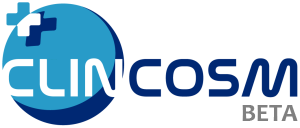Performance of Long-wavelength Autofluorescence Imaging
Study Details
Study Description
Brief Summary
Fundus autofluorescence imaging has become an important diagnostic tool in ophthalmology, guiding diagnosis and assessment of progression of retinal diseases. This study investigates the performance of optimized long-wavelength autofluorescence imaging. To achieve this goal, the investigators will determine an optimal long wavelength excitation light and investigate the autofluorescence signal intensity in normals and patients with different retinal diseases. The diagnostic performance of the long-wavelength autofluorescence will be evaluated by assessing sensitivity and specificity for diagnosing a variety of degenerative retinal diseases and by comparing it to conventional autofluorescence.
| Condition or Disease | Intervention/Treatment | Phase |
|---|---|---|
|
N/A |
Detailed Description
Fundus autofluorescence (AF) imaging of the retina with confocal scanning laser ophthalmoscopy has been established as a non-invasive imaging modality for the diagnosis of retinal and macular diseases. Long-wavelength near-infrared autofluorescence (excitation: 787 nm, LW-AF) is a new, innovative alternative to the classic autofluorescence imaging using 488 nm blue excitation light. Excitation of the fluorophores at the ocular fundus using a longer wavelength has several advantages. However, with the current imaging technique the autofluorescence signal and thus image quality is considerably lower compared to conventional short-wavelength autofluorescence (SW-AF). This may be the main reason for the currently limited application and scarce scientific publications on this technique.
Therefore, the objective of this study is to assess the performance of an optimized setup of long-wavelength autofluorescence imaging in clinical routine applications. For this purpose, additional laser sources will be integrated into a scanning laser ophthalmoscope and the performance with regards to image quality will be investigated systematically using different excitation wavelengths and filter combinations in healthy controls.
In a next step, the signal intensity will be quantified using an integrated fluorescent reference. First, factors affecting measurements will be identified, followed by generation of a normative database. Subjects with various retinal diseases will then be investigated and compared to the normative database.
Finally, the diagnostic performance of long-wavelength autofluorescence imaging to detect retinal degenerative diseases will be investigated and compared to conventional imaging techniques.
Study Design
Arms and Interventions
| Arm | Intervention/Treatment |
|---|---|
| Experimental: Patients with various retinal diseases Patients with various retinal diseases will be examined using long-wavelength autofluorescence imaging to assess the performance compared to conventional imaging methods and to quantify the signal compared to a normative database |
Device: Long-wavelength autofluorescence imaging
Long-wavelength autofluorescence imaging will be performed with a prototype confocal scanning laser (cSLO) ophthalmoscope which will be equipped with additional laser sources and a reference for quantification of the signal. The experimental long-wavelength laser sources will be integrated into a custom-modified Spectralis HRA cSLO from Heidelberg Engineering. The additional laser sources will operate with long wavelength which are less energetic compared to the conventional short-wavelength lasers used currently for routine autofluorescence imaging. All safety standards have been considered and the light exposure for all imaging modes is well below the exposure limits for Class 1 and Class1M laser products as defined in the standard IEC 60825-1, edition 3.0, 2014-5.
|
| Experimental: Healthy participants Healthy participants will be examined using long-wavelength autofluorescence imaging to optimize the signal with additional laser sources and device settings and to compile a normative database for the quantification of the signal. |
Device: Long-wavelength autofluorescence imaging
Long-wavelength autofluorescence imaging will be performed with a prototype confocal scanning laser (cSLO) ophthalmoscope which will be equipped with additional laser sources and a reference for quantification of the signal. The experimental long-wavelength laser sources will be integrated into a custom-modified Spectralis HRA cSLO from Heidelberg Engineering. The additional laser sources will operate with long wavelength which are less energetic compared to the conventional short-wavelength lasers used currently for routine autofluorescence imaging. All safety standards have been considered and the light exposure for all imaging modes is well below the exposure limits for Class 1 and Class1M laser products as defined in the standard IEC 60825-1, edition 3.0, 2014-5.
|
Outcome Measures
Primary Outcome Measures
- Performance of long-wavelength autofluorescence imaging [1 day]
The sensitivity and specificity to detect characteristics in retinal diseases will be investigated in patients with various retinal diseases and compared to conventional imaging methods
Secondary Outcome Measures
- Optimization of the signal of long-wavelength autofluorescence imaging using different laser and filter settings [1 day]
To optimize the signal of long-wavelength autofluorescence imaging, the fluorescence intensity of the different laser sources and filter settings will be assessed.
- Quantification of the optimized signal of long-wavelength autofluorescence imaging in healthy controls and participants with various retinal diseases [1 day]
To quantify the optimized signal of long-wavelength autofluorescence imaging the absolute fluorescence intensity compared to a fluorescent reference will be assessed in patients with various retinal diseases and compared to healthy controls
Eligibility Criteria
Criteria
Inclusion Criteria:
-
Age 18 years or above
-
Defined retinal disease (patients) or no known retinal disease (healthy participants)
-
Participants willing to read and understand the study information and provide informed consent
-
Participants agree to have some examinations and photographs taken from their eyes
Exclusion Criteria:
-
Significant opacities of the ocular media
-
difficulties positioning still in front of the camera
-
any ocular/ general disease known to affect recordings and/or analysis of retinal images
-
Pupil diameter <5mm
Contacts and Locations
Locations
| Site | City | State | Country | Postal Code | |
|---|---|---|---|---|---|
| 1 | Oxford Eye Hospital | Oxford | United Kingdom | OX3 9DU |
Sponsors and Collaborators
- Oxford University Hospitals NHS Trust
Investigators
- Principal Investigator: Peter Charbel Issa, DPhil, MD, Oxford Eye Hospital, The West Wing John Radcliffe Hospital Oxford, OX3 9DU
Study Documents (Full-Text)
None provided.More Information
Publications
None provided.- 13703
